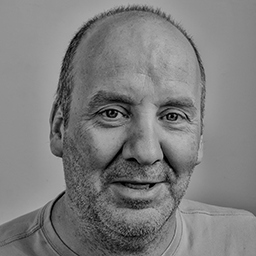Nature has things figured out. Ruminant animals like cows have a remarkable ability to convert their plant-based diets into nutrient-dense, saturated-fat-rich milk and meat. This perfect, natural system has nourished generations of humans and sustained civilizations throughout history.
At the heart of this marvel is the rumen — a specialized digestive powerhouse where trillions of microorganisms work in harmony to transform plant material into energy and protein for the cow. Among their many functions is a remarkable process called biohydrogenation,1 in which these microbial “workers” convert normal levels of unsaturated fats from the cow’s diet into stable, health-promoting saturated fats.
This intricate system is nature’s way of crafting an ideal nutrient profile for both the cow and those who benefit from its milk and meat.
With an astonishing 1.2 to 1.3 quadrillion (1015) microorganisms inhabiting the rumen, this complex system operates with a precision and elegance we may never fully understand — and that’s okay. Mother Nature has perfected this system over thousands of years, a testament to its resilience and time-tested design. It’s a reminder of the beauty and balance inherent in the natural world.
The Industrial Intervention
But here’s where things take a troubling turn. Big Dairy and industrial agriculture weren’t satisfied with nature’s design. They’ve been quietly working to override this ancient system, and they’ve succeeded in ways I never thought possible.
I used to believe that a cow’s natural biohydrogenation process was bulletproof — that you really couldn’t manipulate the fatty acid profile of dairy products (or meat). I was wrong.
Scientists have developed what they call “rumen protected fats” — essentially, fatty acids wearing armor against the rumen’s natural transformation process. These protected fats, ‘oilseeds’ and other mixes often derived from industrial seed oils, bypass the rumen’s defenses, allowing more unsaturated fats to reach the cow’s milk. This alteration increases the unsaturated fat content in the milk, disrupting its natural fat profile.2
“New protected fats were developed in recent years that were designed to resist biohydrogenation and enhance the concentration of unsaturated fatty acids in milk.”3
When we increase PUFAs (polyunsaturated fatty acids) in dairy, we’re not just adding something — we’re taking away the saturated fats that our bodies need for optimal metabolism and health. It’s a zero-sum game where we’re the ones losing.
Some efforts have been able to decrease the saturated fatty acid content of milk by 20% — A fatty acid change that does not support our health and metabolisms.
What we’re witnessing is nothing short of a systematic attempt to rewire nature’s perfect design. While the food industry may celebrate this as innovation, it’s worth asking: Should we be trying to “outsmart” Mother Nature?
The answer, for those of us who understand the vital importance of traditional, nutrient-dense foods, is clear — Mother Nature always knows best.
Where Did This Come From?
Dairy products have been a part of human diets for over 7,000 years,4 valued not just for their taste but also for their energy and nutritional density.
Nature designed milk (and dairy products) with a specific blueprint — a carefully balanced composition of fats that has remained largely unchanged throughout history. This natural formula features a higher proportion of saturated fats compared to unsaturated ones, with linoleic acid typically making up a modest 1% to 2% of the total.
When some of these “rumen-protected fats” are introduced, the linoleic acid content can increase by up to three times.5 Let’s keep butter as butter and avoid turning it into something closer to margarine!

So Why Do We Now Think We Are Smarter Than Nature?
For over half a century, we’ve been sold a compelling but flawed narrative: saturated fat is the villain, and unsaturated fats are the heroes. This oversimplified story hasn’t just shaped public opinion — it’s fundamentally altered our food system.
Traditional cooking fats like tallow, butter, and ghee (rich in saturated fats) have been pushed aside in favor of more unsaturated alternatives like margarine and seed oils. We’ve witnessed this transformation in how we raise chickens and pigs, as well, where traditional feeding practices have been abandoned in favor of high-PUFA diets from industrial monocrop agriculture that has fundamentally changed the fatty acid composition of these animals, which we then eat.
Perhaps most concerning is how deeply this bias has infiltrated scientific literature. Consider this startling quote from recent research: “The negative effects of SFA seem to outweigh their positive functions in milk, so more research is needed to reduce the amount of SFA in milk.”6
Interest in manipulating the fat content of milk reached its peak in the 1980s, when the U.S. Department of Health and Human Services and USDA’s Dietary Guidelines ramped up its campaign against saturated fat and cholesterol.7
But here’s the irony: while industry and policy makers were busy trying to “fix” dairy’s natural fat profile, a wealth of research was quietly accumulating that told a very different story.
Modern science has revealed that dairy fats (that are naturally high in saturated fat and low in polyunsaturated fats) aren’t the health villains we once thought they were. Research repeatedly shows that dairy fats benefit our health.
- Dairy fats have a neutral or positive effect on cardiovascular health8
- There no significant association between full-fat dairy consumption and increased risk of heart disease or stroke9
- Dairy consumption does not contribute to diabetes, and may even have a protective effect10
- Dairy consumption has been linked to increased lean body mass and reduced body fat11
- The saturated fatty acids found in dairy may improve energy balance through reduced fat synthesis and increased fat oxidation12
It seems nature’s wisdom, refined over thousands of years, might exceed our modern presumptions about nutrition. The lesson? When it comes to saturated fat from whole, natural food sources like dairy, our fears have been misplaced.
Yet this misconception hasn’t persisted by accident. Major agricultural and pharmaceutical industries have built empires on the “cholesterol is bad” doctrine. Maintaining the “saturated fat is harmful, unsaturated fat is healthy” narrative serves their bottom line, helping drive billions in statin drug sales and propping up the industrial seed oil market.
The time has come to reconsider what we think we know about fats and return to a more nuanced understanding of these essential nutrients — one that isn’t clouded by corporate profit motives.
What Does the Research Say About Fatty Acid Manipulation in Dairy?
Nature designed ruminants — like cows and goats — with a remarkable ability to convert dietary polyunsaturated fats (PUFAs) into saturated fats (SFAs). But there’s a catch: when these animals face an unprecedented flood of PUFAs in their diet, their natural conversion systems become overwhelmed. The result? Those excess PUFAs find their way directly into their milk and fat, bypassing the animal’s natural protective mechanisms.
The culprits behind this PUFA overflow are industrial oilseed crops — soybeans, cottonseed, flaxseed, sunflower seed, safflower, canola, rapeseed, and peanuts. These crops, specifically cultivated for their high oil content, contain such excessive levels of PUFAs that they’re overwhelming animals’ digestive systems, leading to higher PUFA and lower SFA levels in dairy — exactly the opposite of what traditional dairy provides for optimal health.
The scientific literature is brimming with evidence of how easily we can manipulate dairy’s fatty acid profile by changing what the ruminants eat.13,14,15

The results are striking:
- Adding fish meal to cows’ diets slashed stearic acid levels by over 26%16
- Researchers in Northern Ireland managed to dramatically alter milk’s natural fat balance, reducing saturated fat from 64% to just over 50% while boosting unsaturated fat from 35% to 46%17
- A combination of linseed (rapeseed) oil and fish oil doubled the PUFA concentration in milk and reduced the SFA content18
- Total unsaturated fat content of milk fat increased in a linear fashion with increased level of rapeseed oil (canola) in the diet19
The goat dairy industry tells the same concerning story. Multiple studies confirm that when goats receive supplemental feed designed to be higher in PUFAs, their milk’s fatty acid profile shifts — higher in PUFAs, lower in beneficial saturated fats.20,21,22,23
“Milk from goats receiving sunflower seeds or oil supplementation displayed an improvement in the FA profile, with an increased PUFA and monounsaturated FA contents and a decreased in SFA content.”24
The industry has become so efficient at this manipulation that they’ve developed specialized techniques, like binding unsaturated fats with calcium salts to protect them from the animal’s natural conversion processes.25 This allows the PUFAs to pass directly into the milk, unchanged. The results are dramatic — successfully lowering saturated fat and increasing unsaturated fat levels.26,27
Perhaps most telling is how the industry views these changes — celebrating the “improvement” in the fatty acid profile. Some researchers even advocate for deliberately selecting cows that produce milk with more unsaturated fats.28
“A more healthful milk fatty acid composition can be achieved by altering the cow’s diet, for example, by feeding supplemental fish oil (FO) or roasted soybeans (RSB), or by selecting cows with a more unsaturated milk fatty acid composition.”29
They proudly note that butter spreads more easily due to higher PUFA levels — a characteristic that might please consumers but signals a fundamental shift away from dairy’s natural composition.
“The purpose of the study was to obtain butter enriched with PUFA from the milk of Holstein cows with a modified fatty acid composition towards an increased content of unsaturated fatty acids …
In the milk fat of the milk of the experimental group of cows, the total amount of saturated fatty acids was reduced by 14.9%, and unsaturated fatty acid level was increased by 12.6%; as a result, the ratio of unsaturated to saturated fatty acids was higher by 31.7%.”30
However, other researchers are pointing out a big problem — that increasing the PUFA content in dairy will increase the risk of oxidation. DUH! PUFAs are UNSTABLE molecules due to the multiple double bonds in the fatty acid structure.
“Increasing the concentration of nutritionally beneficial FAs in milk also increases the risk of milk fat oxidation, leading to changes in the nutritional and dietary properties of milk.”31
“However, there are also problems associated with having high UFA content in milk fat, including its lower stability and the accompanying phenomena such as oxidation and possible sensory changes, such as oxidation.”32
Can we please spend research dollars elsewhere? There are countless areas where research dollars would be better spent — we do not need to manipulate the natural design of Mother Nature.
Fishy Milk
In an age where it feels like nothing escapes the grasp of “innovation,” some dairy products are now being mixed with algal oil. But let’s pause for a moment — this is not a health food trend we should be celebrating. When did we start treating whole foods like they need to be re-engineered? While omega-3s are beneficial in moderation, more isn’t necessarily better. Algal oil has the potential to oxidize during digestion,33,34 creating harmful by-products.35
Milk, in its natural form, isn’t high in omega-3s — this isn’t something that has been part of its composition for millennia. Adding excess omega-3s to milk creates something unnatural, straying far from the nutritional balance nature intended. DHA is present in milk, but only in small, balanced amounts. That’s how it’s always been, and that’s how it should stay.
So, no, we don’t need “omega-3 enriched milk.” We should focus on the naturally occurring fatty acid composition that milk was meant to have. Just because a small amount of something has benefits doesn’t mean the more, the better. It’s about balance — the balance that Mother Nature created over thousands of years. Let’s leave milk as … milk.

Conclusion — Let Nature Be the Guide
As we continue to manipulate the foods we consume, it’s clear that our efforts to “improve” upon nature often do more harm than good. The rise in polyunsaturated fatty acids (PUFAs) in our food system — from vegetable oils to dairy alternatives (like nut milks) and altered animal fats — is wreaking havoc on human metabolism.36
With so many changes in our food supply, adding more PUFAs through manipulated dairy products is the last thing our bodies need.
Navigating today’s conventional food system is tricky, but it all starts with knowing where your food comes from. By supporting farmers who raise livestock as nature intended, you’re ensuring you’re getting dairy with the natural fatty acid profile Mother Nature designed — one that’s far more beneficial for your health. When we turn to dairy alternatives (like oat milk, soy milk, almond milk, etc.), we load ourselves with PUFAs, further straying from the nutritional balance we need.
Grains can still be fed to dairy animals since many options are lower in fat and can provide the animals with energy. At this level, the ruminant biohydrogenation process will convert PUFAs ingested in small quantities into saturated fats — creating a healthy and balanced fatty acid profile, as nature designed.
However, it’s important we become aware of oilseeds and “rumen-protected fats,” which could be contributing to rising PUFA levels in our dairy.37
The conventional food system and Big Dairy are trying to outsmart Mother Nature, increasing the PUFA content in a food that has always been naturally low in PUFAs. But with every increase in PUFAs, something else must give — specifically, saturated fats, which are essential for our health.
Real, natural milk contains the perfect balance of saturated fats and low levels of unsaturated fats. As industry practices continue to shift, milk’s natural fatty acid composition is altered, but the results are not in our favor.
So, let’s go back to the basics: milk has been nourishing us for thousands of years in its near-perfect form. We don’t need to try and fix what isn’t broken. Instead, let’s trust in the wisdom of nature and make more mindful choices in the foods we consume. After all, nature knows best.
Transform Your Health — One Step at a Time


Ashley and her sister Sarah have put together a truly groundbreaking step-by-step course called “Rooted in Resilience.” They have compiled what clearly is the best application of Dr. Ray Peat’s work on Bioenergetic Medicine that I have ever seen.
It is so good that I am using the core of their program to teach the many Health Coaches that I am in the process of training for the new Mercola Health Clinics I am opening this fall. It took these women working nearly full-time on this project for a year to create it.
This has to be one of the absolute best values for health education I have ever seen. If you want to understand why you struggle with health problems and then have a clear program on how to reverse those challenges, then this is the course for you.
It is precisely the type of program I wish I would have had access to when I got out of medical school. I fumbled around for decades before I reached the conclusion they discuss in the course and share with you so you can restore your cellular energy production and recover your health.
|
Use reverse dieting to increase your calories without gaining weight and tanking your metabolism, all while improving your energy levels |
|
Select and eat the right foods to heal your metabolism and improve glucose utilization |
|
Balance your hormones to help reduce anxiety, weight gain and sleep disturbances |
|
Heal your gut for proper immune function, mood and weight management |
|
Tweak your diet and lifestyle habits to improve your mindset and mental health |
|
Crush your fitness goals with ease and get your life back on track |
|
Master the most essential habits for health with bonus guides, including tons of meal plans to take the stress out of meal time planning and shopping, and so much more! |
Learn more about Rooted in Resilience here.


About the Author
Ashley Armstrong is passionate about helping others restore metabolic health and in creating an alternative food system low in PUFAs and low in toxic agrochemicals. She’s the co-founder of Angel Acres Egg Club, which specializes in low-PUFA (polyunsaturated fat) eggs that are shipped to all 50 states.
Armstrong also co-founded Nourish Food Club, which ships low-PUFA chicken, low-PUFA pork, beef, cheese, A2 dairy and traditional sourdough to all 50 states. While the egg club has memberships open, Nourish Food Club has a temporary waiting list.
Test Your Knowledge with Today’s Quiz!
Take today’s quiz to see how much you’ve learned from yesterday’s Mercola.com article.
What practical step can you take to protect your mitochondria and avoid reductive stress?







